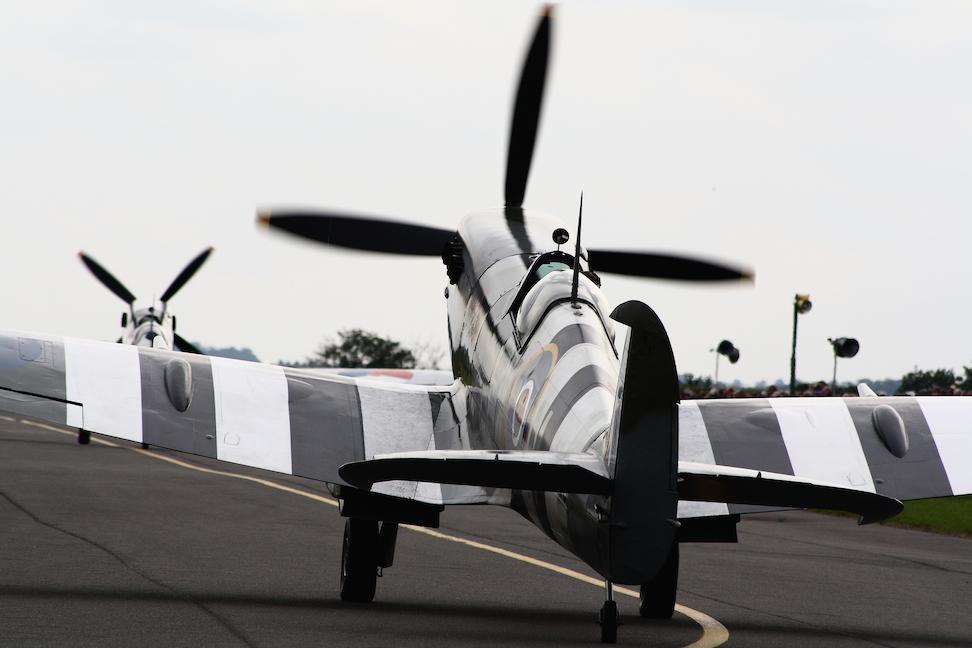Vought-Sikorsky Aircraft Division's OS2U Kingfisher was the U. S. Navy's primary ship-based, scout and observation airplane during World War II. Rex Beisel, a design engineer at Vought-Sikorsky Aircraft Company, crafted the OS2U in 1937. Beisel also designed the Vought F4U Corsair fighter. Beisel's Navy scout was a two-seat monoplane that employed revolutionary spot welding construction to create a smooth, non-buckling fuselage structure. He also used old technology to save weight and increase performance when he covered the wings with fabric aft of the main spar.
The Kingfisher handled well in slow flight, thanks to several innovative control features. In addition to the deflector plate flaps that hung from the trailing edge of the wing, the ailerons also drooped at low airspeeds to function much like extra flaps. Beisel also incorporated spoilers to supplement aileron control at low speeds. The Kingfisher could carry a respectable load. For antisubmarine work, ordnance men could suspend two 45 kg (100 lb) bombs or two 146 kg (325 lb) depth charges. A fixed .30 caliber machine gun was mounted in front of the pilot to fire forward. A gunner seated several feet behind the pilot fired another .30 caliber machine gun on a flexible mount.
The Navy contracted for the prototype XOS2U-1 on March 22, 1937, and this airplane first flew in July 1938, equipped with an air-cooled Pratt & Whitney R-985-4 Wasp Junior radial engine. The first production Kingfisher, the OS2U-1, was delivered early in 1940 and assigned to the battleship "USS Colorado." The Kingfisher could perform a variety of tasks - training, scouting, bombing, tactical and utility missions such as towing aerial gunnery targets and chasing practice torpedoes, and even anti-submarine warfare in the Atlantic Ocean. Most OS2Us operated in the Pacific Theater where Kingfisher pilots rescued many downed airmen. In 1942, a Navy pilot flying a Kingfisher rescued America's World War I ace, Capt. Eddie Rickenbacker, and the crew of a B-17D Flying Fortress forced to ditch in the Pacific. With Rickenbacker and two other passengers, the bomber and its five-man crew had left Hickam Field, Hawaii, bound for Canton Island in the Phoenix Islands group, 2,898 km (1,800 miles) southwest of Hawaii. The Flying Fortress wandered off course and the crew got lost. When the aircraft eventually ran out of fuel and ditched, the eight survivors put to sea aboard three life rafts. Several weeks passed without food or water. By chance, a Kingfisher crewed by Lt. Willam F. Eadie, pilot, and L.H. Boutte, radioman, spotted the raft carrying Rickenbacker and two other crewmen. Eadie strapped the sickest man into the gunner's seat, and then he lashed Rickenbacker and another man to each wing. A Kingfisher could never takeoff with such a load, so Eadie began to taxi toward his base on Funafuti Island, about 64.4 km (40 miles) distant. Soon a Navy Patrol Torpedo boat met the airplane and the other five men were soon rescued. Only one of the eight failed to recover from the long ordeal.
General characteristics
Crew: Two, pilot and observer
Length: 33 ft 10 in (10.31 m)
Wingspan: 35 ft 11 in (10.95 m)
Height: 15 ft 1.5 in (4.61 m)
Wing area: 262 ft² (24 m²)
Empty weight: 4,123 lb (1,870 kg)
Max takeoff weight: 6,000 lb (2,721 kg)
Powerplant: 1× Pratt & Whitney R-985-AN-2 radial engine, 450 hp (336 kW)
Performance
Maximum speed: 164 mph (264 km/h)
Range: 805 mi (1,296 km)
Service ceiling: 13,000 ft (3,960 m)
Armament
2x .30 in (7.62 mm) M1919 Browning machine guns
650 lb (295 kg) of bombs

